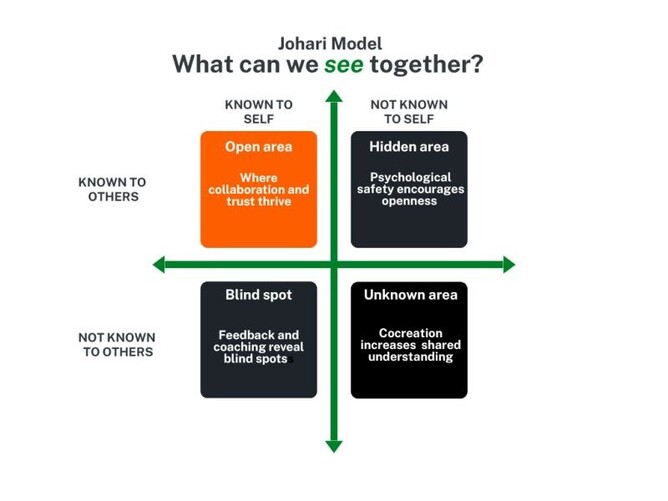When collaboration stalls, it’s rarely because people don’t care. More often, it’s because something unseen is getting in the way — misunderstandings, assumptions, or unspoken concerns that hold teams back.
Here’s a deceptively simple tool that helps teams uncover what’s really happening beneath the surface:
The Johari Window.
This framework maps four areas of self-awareness and team awareness, helping people understand how they show up, what others see, and what’s still hidden.
Open (known to self and others)
Where collaboration flows best. You know where you stand, and others do too.
Ask: What behaviours do I consistently show that help this team thrive?
Blind Spot (unknown to self, known to others)
The well-meaning habits that might be getting in the way without you realising it.
Ask: What’s something I do that others see, but I might not?
Hidden (known to self, unknown to others)
The ideas, concerns, or tensions we keep tucked away — often because we’re not sure it’s safe to share them.
Ask: What have I been holding back that could help this team move forward?
Unknown (unknown to self and others)
Where uncertainty, ambiguity, and true complexity live.
Ask: How do we stay curious together when none of us has the full picture?
Often, simply naming these quadrants helps unblock conversations that have been stuck for months.
When people feel safe enough to shrink the hidden and blind spots, the open area grows, and that’s where real collaboration happens.
At Peopleology, we help teams build the awareness and trust that turn uncertainty into shared progress.


